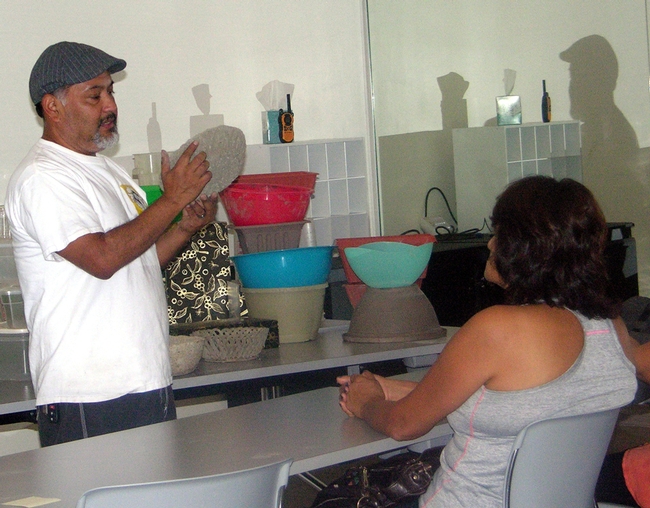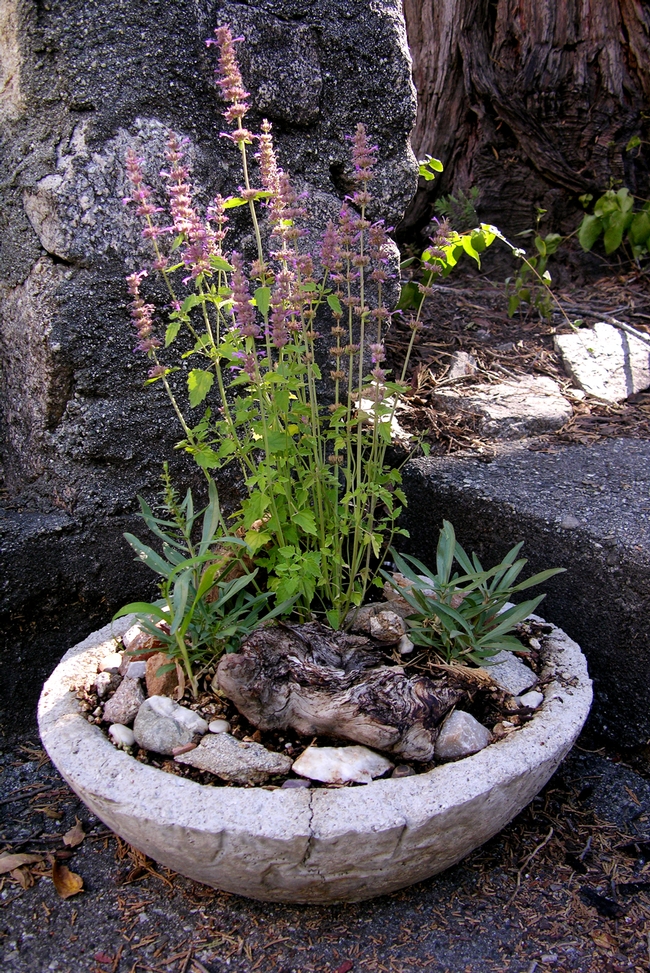Hypertufa is an odd sounding name. It comes from the word tufa defined as a porous rock composed of calcium carbonate and formed by precipitation from water, e.g. around mineral springs. Visitors to Mono Lake have seen tufa in the shape of craggy sand castle-like formations. In Europe, soft tufa stone was traditionally used in the construction of everything from stone walls to feed troughs for livestock. Both the Etruscans and the Romans used the material, and today ancient tufa relics are a part of the charm of the English countryside.
In 1930s England, antique tufa troughs became fashionable as garden pieces, but they were pricey, and became hard to find. As the story is told, resourceful gardeners came up with a recipe for making an artificial tufa-like material. The name Hyper-tufa was adopted to mean man-made tufa. Over the years, the recipe has not changed much. Of the three components, Portland cement, peat, and perlite, each plays an important role in making a super light, yet durable container. Portland cement is strong and moldable. Perlite (kiln-puffed volcanic pumice) adds lightness. Peat, a natural sod material, adds body, and distributes moisture evenly. Because peat is a non-sustainable resource, some Hypetrtufa makers replace peat with coconut fiber. Coco husk is plentiful, and its long fibers add extra strength to the mix. When combined with the right amount of water, the ingredients form a clay-like substance that's easily molded into containers of all sizes.

The three-part photo shows Hypertufa planters made for our Lake Arrowhead garden. The 20 inch pots are small pollinator habitats that attract hummingbirds and bees. The containers are light enough to move around the property. The flowering plants spend the warm season well protected from burrowing ground squirrels and gophers that tend to devastate mountain gardens. If you decide to go with Hypertufa, remember the material is porous, so tropical plants may not do so well. Hypertufa pots make a perfect home for dry-climate natives, and desert plants, and add a touch of rustic charm to the garden.
By Michele Martinez, Lake Arrowhead, Mountain Master Gardener

